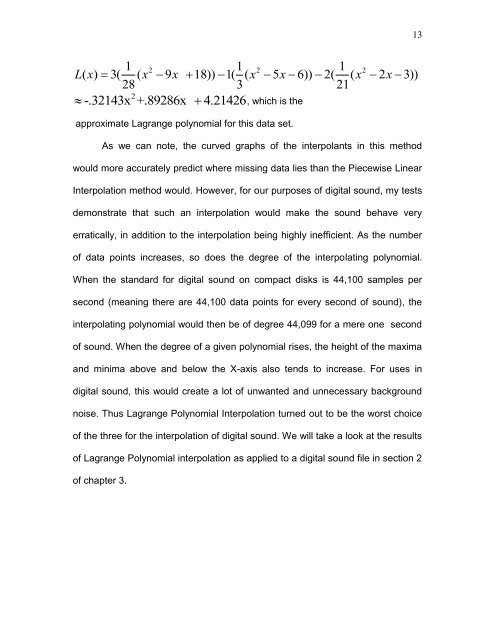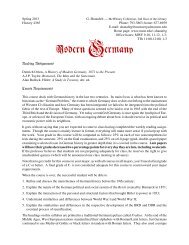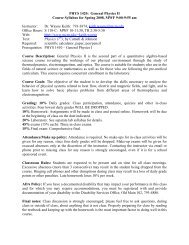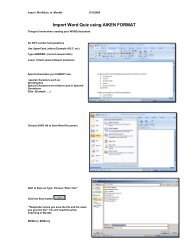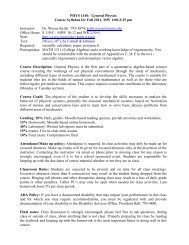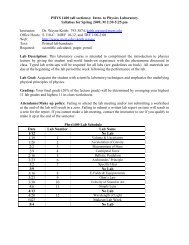Data Interpolation and Its Effects on Digital Sound Quality - McMurry ...
Data Interpolation and Its Effects on Digital Sound Quality - McMurry ...
Data Interpolation and Its Effects on Digital Sound Quality - McMurry ...
Create successful ePaper yourself
Turn your PDF publications into a flip-book with our unique Google optimized e-Paper software.
131 1 1L x x x x x x x28 3 212-.32143x +.89286x 4.21426 , which is the2 2 2( ) 3( ( 9 18)) 1( ( 5 6)) 2( ( 2 3))approximate Lagrange polynomial for this data set.As we can note, the curved graphs of the interpolants in this methodwould more accurately predict where missing data lies than the Piecewise Linear<str<strong>on</strong>g>Interpolati<strong>on</strong></str<strong>on</strong>g> method would. However, for our purposes of digital sound, my testsdem<strong>on</strong>strate that such an interpolati<strong>on</strong> would make the sound behave veryerratically, in additi<strong>on</strong> to the interpolati<strong>on</strong> being highly inefficient. As the numberof data points increases, so does the degree of the interpolating polynomial.When the st<str<strong>on</strong>g>and</str<strong>on</strong>g>ard for digital sound <strong>on</strong> compact disks is 44,100 samples persec<strong>on</strong>d (meaning there are 44,100 data points for every sec<strong>on</strong>d of sound), theinterpolating polynomial would then be of degree 44,099 for a mere <strong>on</strong>e sec<strong>on</strong>dof sound. When the degree of a given polynomial rises, the height of the maxima<str<strong>on</strong>g>and</str<strong>on</strong>g> minima above <str<strong>on</strong>g>and</str<strong>on</strong>g> below the X-axis also tends to increase. For uses indigital sound, this would create a lot of unwanted <str<strong>on</strong>g>and</str<strong>on</strong>g> unnecessary backgroundnoise. Thus Lagrange Polynomial <str<strong>on</strong>g>Interpolati<strong>on</strong></str<strong>on</strong>g> turned out to be the worst choiceof the three for the interpolati<strong>on</strong> of digital sound. We will take a look at the resultsof Lagrange Polynomial interpolati<strong>on</strong> as applied to a digital sound file in secti<strong>on</strong> 2of chapter 3.


